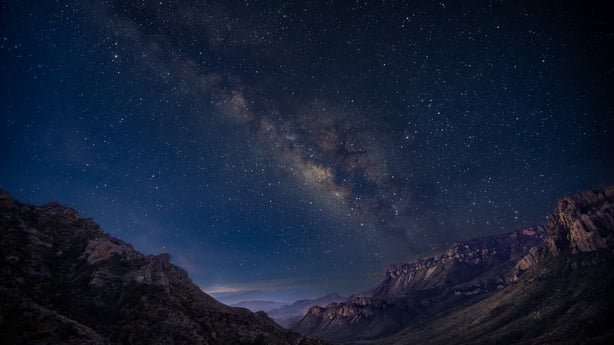We know that scores of tourists come to our shores to soak up the clean air, rugged coasts and the sight of all those green fields, but did you know we're a leader in 'dark sky tourism'?
Ed Finn, travel writer and Danielle Wilcox, resident astronomer and Telescope Operator at Blackrock Castle Observatory in Cork, joined Today with Claire Byrne to discuss why Ireland renowned across the world for its clear and bright skies, and where to go stargazing around the country. Listen back above.
If you want to spot some stars, your first job is to get away from the city where street and building lights create light pollution and obscure the skies.

Dark sky tourism has boomed in recent years, Finn said, with 22 countries and more than 160,000 square kilometres of dark skies to be viewed. There are three verified locations to visit across the Ireland, Finn says: Kerry International Dark Sky Reserve, Mayo Dark Sky Park and OM Dark Sky Park & Observatory.
"There's a huge desire for people to reconnect with nature again", Finn added.
It might seem obvious, but how do you use these dark sky areas? Go out and look up?
First of all, the spaces are free, and they give you incredible visibility on sights like the Milky Way, which Finn saw in Palma in the Canary Islands. "You really feel your place in the cosmos when you're there", Finn said.
He added that there's growing appreciation for getting away from bright lights and basking in the night sky. "They've proved that light pollution affects our circadian rhythms, animals as well", he said, adding that it's a "growing movement all over the world".
As for Wilcox, she added that the night skies in deserts are truly worth making the trek for. "If you're able to ever visit a desert, when you have a really dry atmosphere you have unbelievable views of the night sky, so that's really what you want. Something dry, something cool and a good winter night is best because then you get more hours of darkness."
As for when to plan your stargazing trip, Wilcox said that winters are better, especially for doing so with children, as you don't have to stay out very late to get dark skies.
She suggested keeping an eye on the moon cycle as if you venture out on a night with a full moon, the light from the moon will affect how many stars and constellations you can see. "You want a new moon, you want no moon in the sky and you'll be able to see the maximum number of stars in your night sky."
As for kit, you can bring a telescope if you have one but they're not necessary – Wilcox says a pair of binoculars would be enough. Keep an eye out for planets in the skies too, with Saturn and Jupiter currently visible in our skies.

